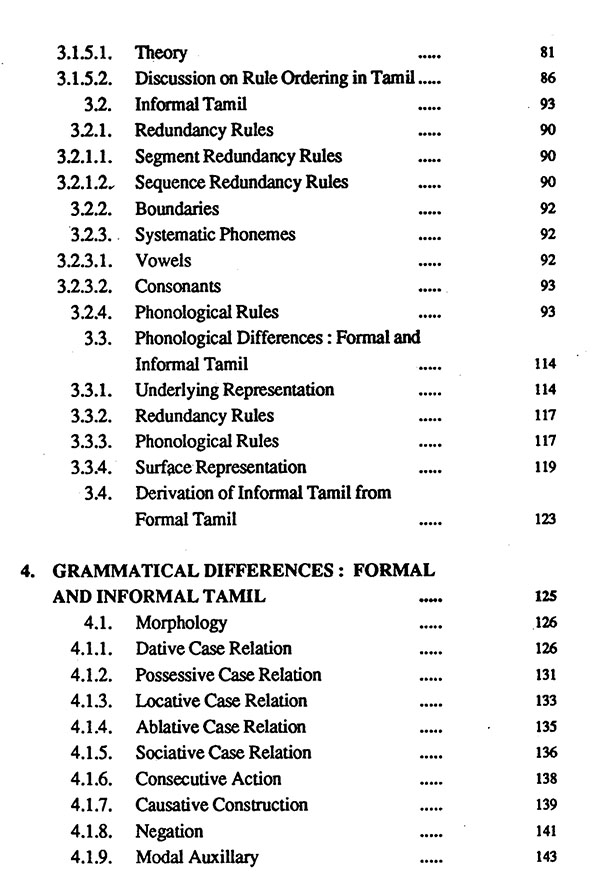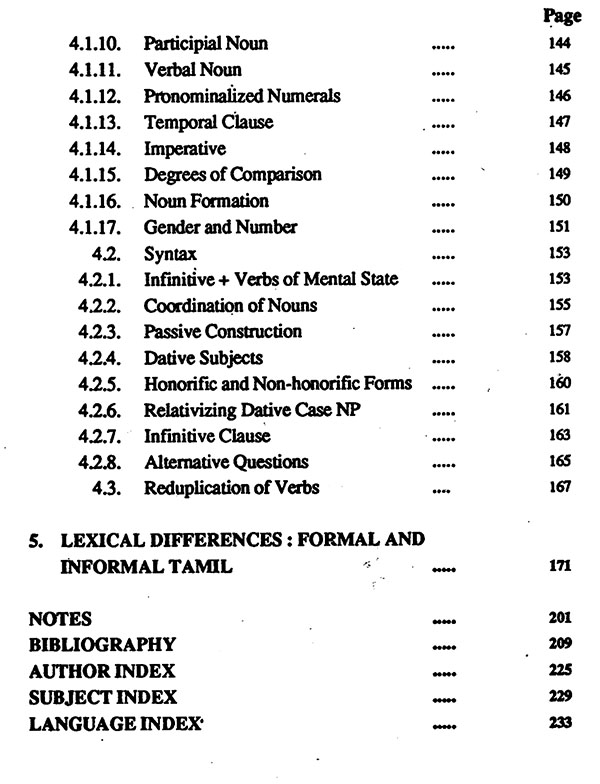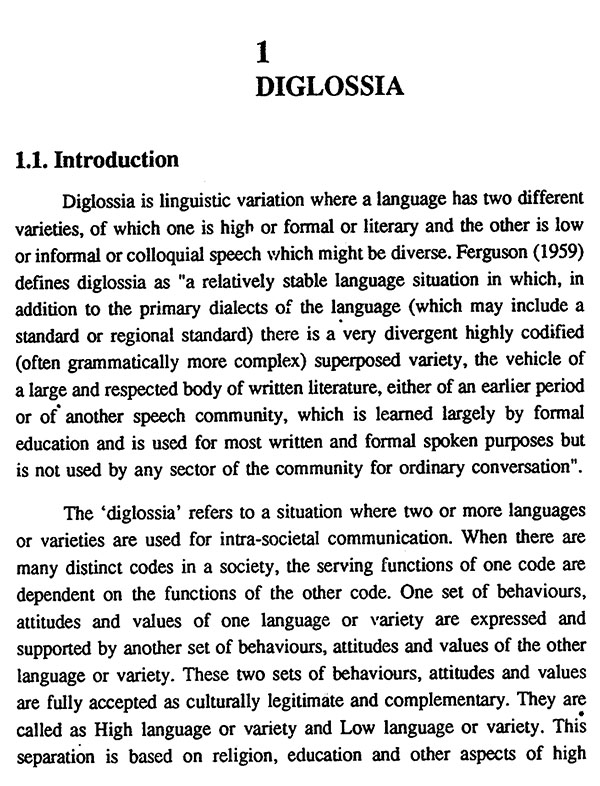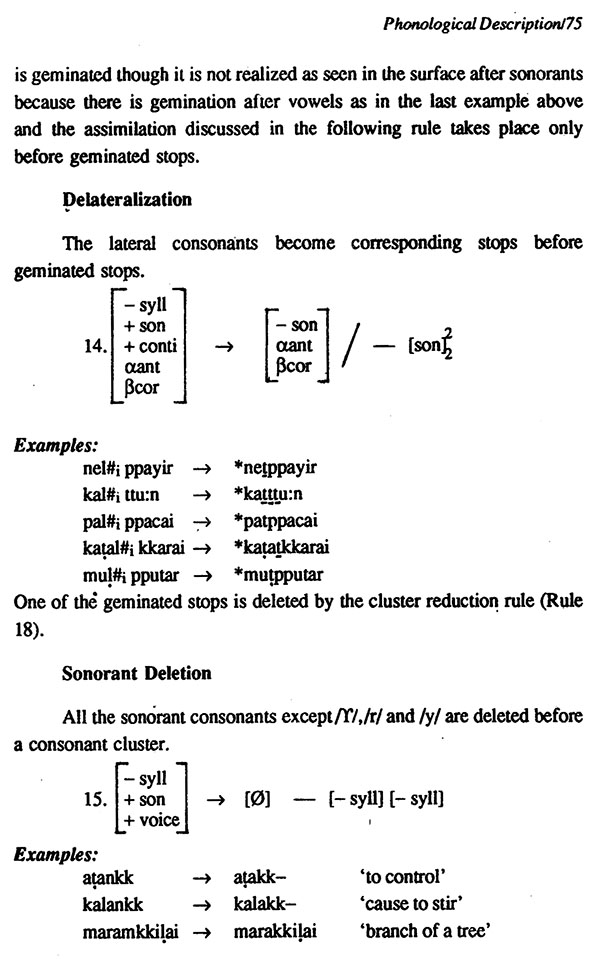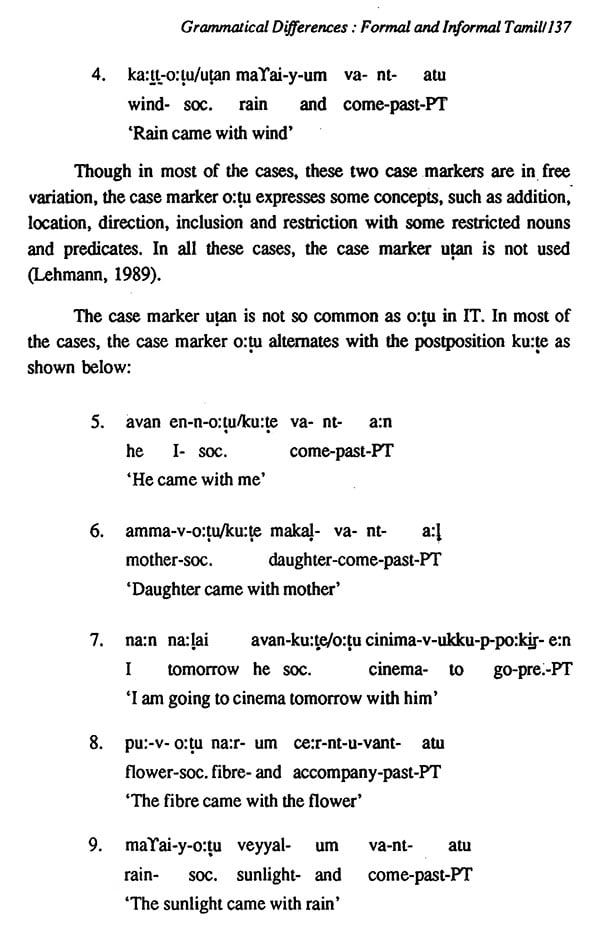
Diglossia : Formal and Informal Tamil (An Old and Rare Book)
Book Specification
| Item Code: | NAX326 |
| Author: | N. Ramaswami |
| Publisher: | Central Institute Of Indian Languages, Mysore |
| Language: | English |
| Edition: | 1997 |
| ISBN: | 8173420424 |
| Pages: | 232 |
| Cover: | Paper Back |
| Other Details | 9.00 X 6.00 inch |
| Weight | 360 gm |
Book Description
The Official Language Resolution of 1968 made the Central Government responsible for the development of all Indian languages in addition to Hindi. The Kher Commission of the Government of India recommended the establishment of three Central Institutes for the purpose of the study of Indian languages with the objective of preparing them for the new roles of national reconstruction and development. All these developments led to the establishment of Central Institute of Indian. Languages in Mysore on July 17, 1969.
The primary objective of the Institute is to promote the development of Indian languages in education, mass communication and administration as part of this, the Institute produces materials and methods to use in new domains. The Institute also does basic research work and inservice training.
The Institute conducts seminars, workshops and training programmes in collaboration with Universities and other Research Institutions for the dissemination of knowledge of advanced linguistic research findings.
Some of the scholars do research work while working in the Institute. So, the Institute has taken a decision to publish some of the outstanding doctoral dissertations for their contribution to the better understanding of Indian languages since they also meet the objectives of the Institute.
Diglossic languages pose problems both for the first language learners as well as second language learners. The first language learners are facing problems to switch over from informal language to formal language and the second language learners are facing, problems to switch over from formal language to informal language. In Tamil, these problems are there in all the levels, namely phonetics, phonology, morphology, syntax and lexicon.
The present study highlights the differences between Formal Tamil and Informal Tamil in all the levels. The phonological differences are discussed in terms of underlying representation redundancy rules and phonological rules.
The differences between Formal Tamil and Informal Tamil in the morphological level and syntactic level-are also given.
All the lexical items of Formal Tamil do not occur in Informal Tamil. However most of the lexical items of Informal Tamil occur in Formal Tamil. So at the lexical level only those lexical items which occur in Formal Tamil which do not occur in Informal Tamil are given along with their corresponding Informal Tamil lexical items.
I hope that this publication will encourage further research work in the area of diglossia in Tamil and other Indian languages.


